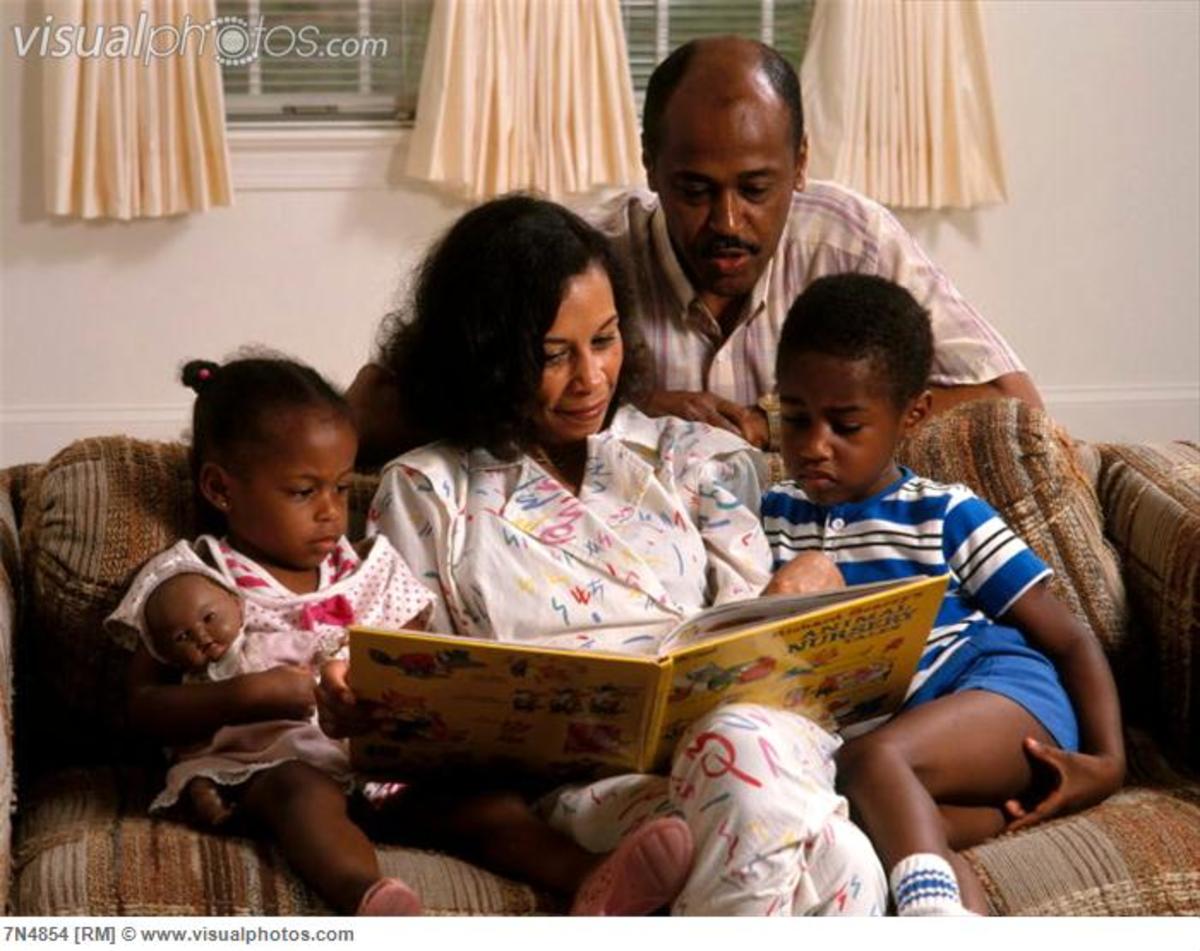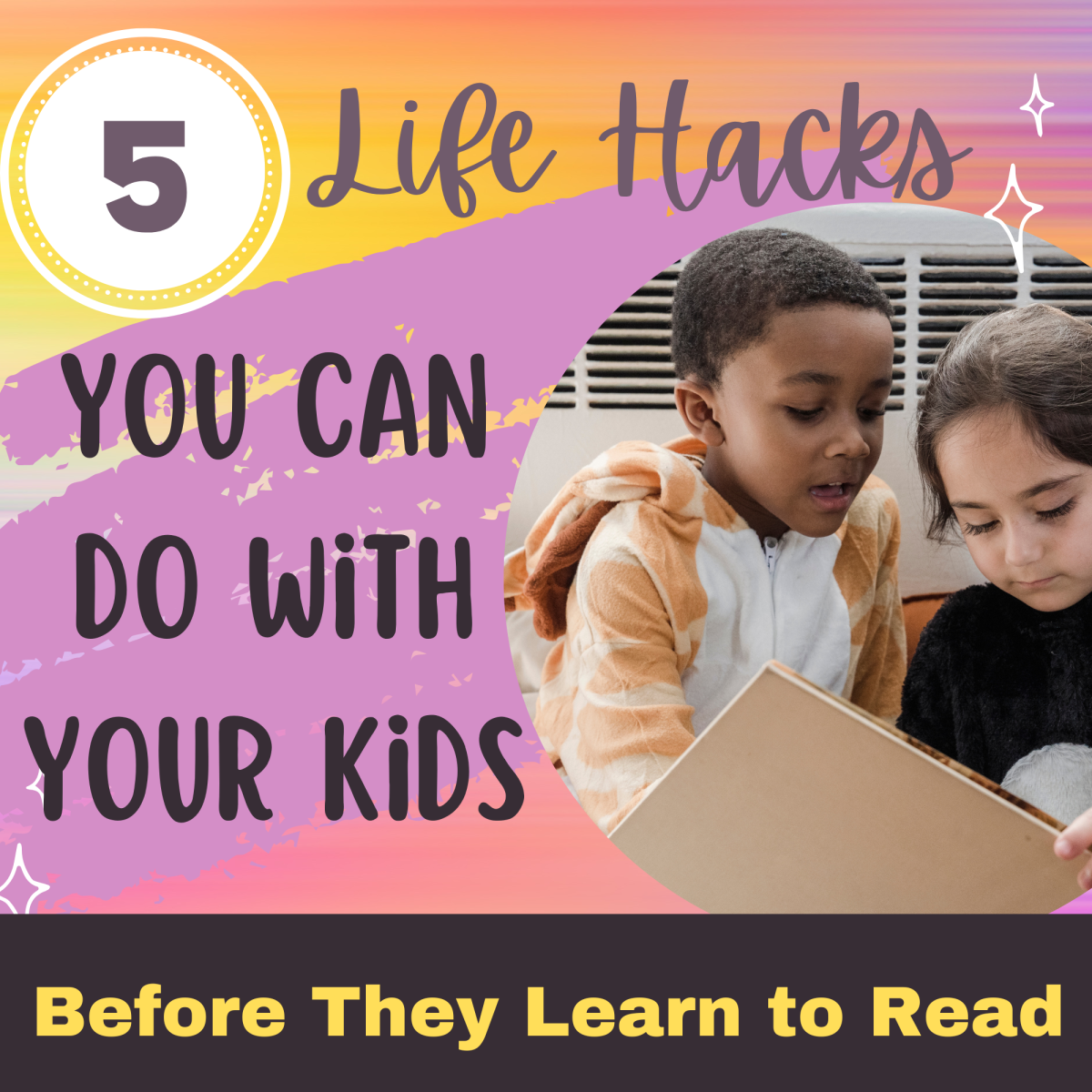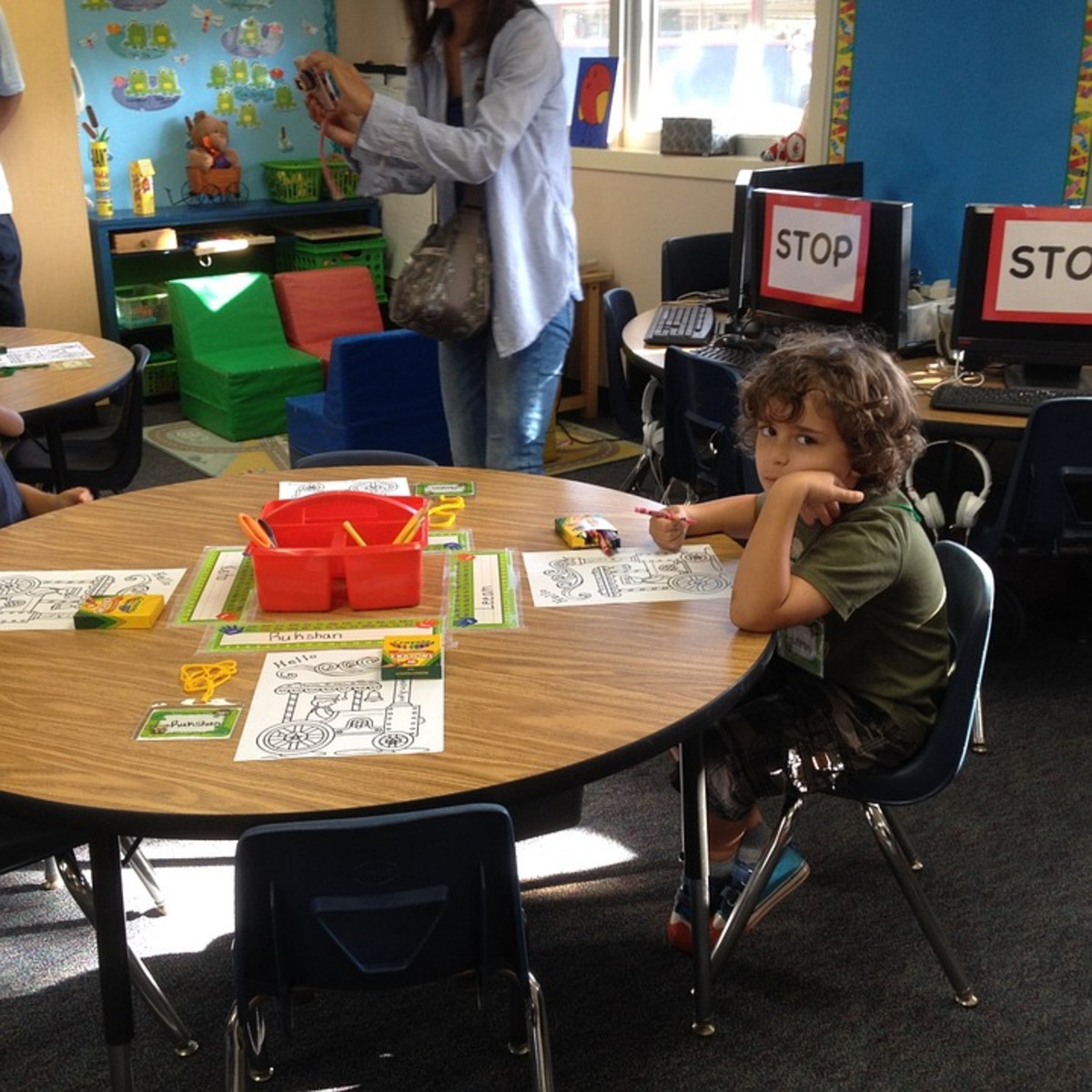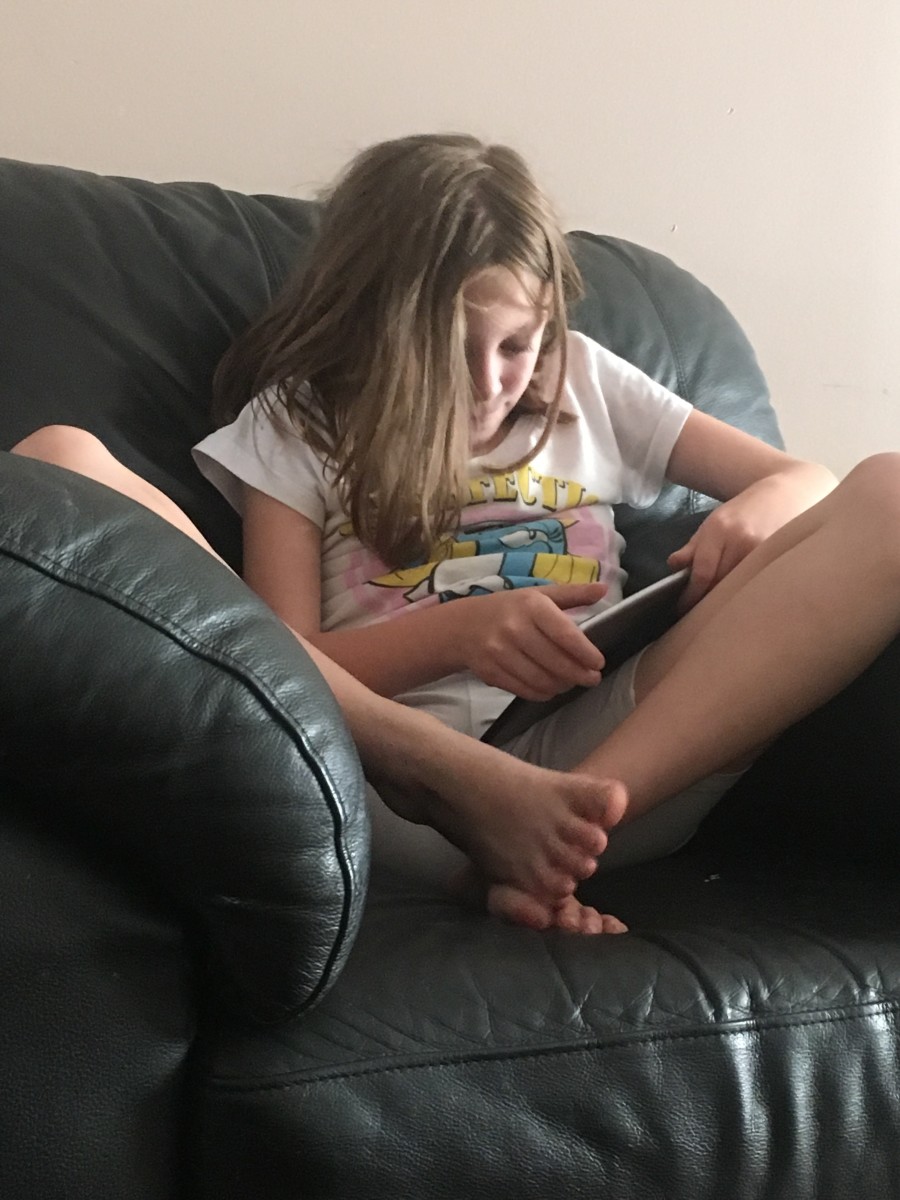- HubPages»
- Family and Parenting»
- Parenting Skills, Styles & Advice»
- Parenting Advice & Tips
10 Positive Steps for Creating Early Readers and Talkers in Children
Many years ago.
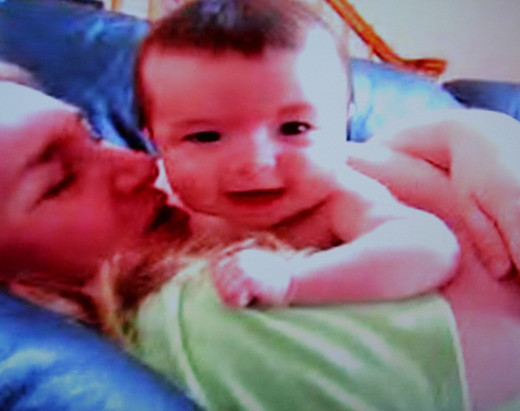
This article is dedicated to my friend and fellow writer, known as GMWILLIAMS. Her words of encouragement are the inspiration for this article!
When you teach a child to speak, they become their own voice!
How does someone preparing to bring a child in the world adorn them with the skills and knowledge for attaining early literacy and communication skills?
Never having children before, my maternal instincts were pushed in to full gear upon the news that I was expecting!
Having a baby changed my world in a profound way! Those pregnancy months became the most powerful days to the nurturing of my unborn baby.
Gearing up with a new headset and CD player, I purchased classical music, Beethoven, Mozart, and others. I played music aloud in my home and in the car. Not for the benefit of my own, but for my child. A child I would be bringing in to this world that I wanted to prepare for her first day of life.
1. Prepare your unborn child for entry in to the world through music and language.
Music plays a crucial role to the development of babies even in the womb.
Some experts say babies can hear in the womb as early as 18 weeks into pregnancy. Other medical professionals say babies can hear the last three months of pregnancy. Regardless, whether which opinion is correct or not, the fact is babies can and do hear inside the womb while they are growing and preparing to be born.
What you do for your unborn child will translate in to a world of opportunity when applying a basic foundation for your child to expand and build upon.
How to prepare for your new child through sound.
|
|---|
Find soothing music on CDs or a radio you have in your home. Play it often.
|
It's proven that babies react in the womb to loud noises. Try to keep a soft tone to create a nurturing soothing background.
|
Help your baby enter the world feeling calm like the soothing sound of the music.
|
Talk to your unborn baby often. Every day. Every moment. Talk to the baby as often as you breathe.
|
Tell the baby in positive words how much you love the fact that you are going to be a mom. Dads can participate in this as well!
|
Use a sweet voice and speak clearly as if you were talking directly to another person in the room.
|
Try to remain peaceful during your pregnancy and avoid heavy stress.
|
Help your baby feel at ease by resting often.
|
Put priority on happiness.
|
2. Read to your unborn child in the womb.
Besides music and speaking to your child often, reading out loud to your child has shown significant association with children whom are early readers.
Not only that but your child will learn voice recognition. It is beneficial to have other family members talk to you often during the development of your child in your womb.
Another benefit of starting to read to your child in the womb is creating a routine. When you start early in anticipation of your baby's birth, your routine will be well established after the arrival of your newborn child.
Books to purchase for a home library.
|
|---|
Dr. Seuss
|
Golden Books
|
Nursery Rhymes
|
Children's books with colorful illustrations
|
Children's Classics
|
Winnie the Pooh
|
Beatrix Potter
|
Here are just a few suggestions.
3. Create a home library.
There are many ways to find books to read to your child.
- Look around and see what you already have on hand.
- Get a membership to the local library. (Do you have a library close enough to walk to after the birth of your child? Children love walks!)
- Library book sales are excellent ways to purchase discarded books that the library no longer needs. Also, libraries receive donated books in second-hand condition which they offer at book sales for way less than the cost of brand new.
- Online stores have discounts on multi-purchases and even offer free shipping. You can also find huge lots of used books at good deals in auctions.
- Thrift stores, flea markets, and second-hand book stores also usually have an ever renewing section of donated used books. (Sometimes you can even find new ones.)
Dedicate a space to your home in a relaxing corner, nook, or room where you can place a rocking chair or very comfortable sitting chair for during and after your pregnancy.
One thing to remember is old and used books may contain dust and mold spores. It may not be suitable to place a home library in a nursery for a baby. Plus when the child is growing and starting to walk, you wouldn't want your child to accidentally pull a book shelf over and injure themselves. Bookshelves later moved in to a child's bedroom should be properly anchored to a wall.
Think about a separate area where you could place a relaxing reading corner. Do you have a spare wall or entire room you can designate for this purpose?
4. Read to your child from birth.
Once your child is born, the first few weeks may be overwhelming.
The first day or so in the hospital will be needed to aquaint yourself with your newborn.
Don't be afraid to pack a book in your overnight bag.
Baby's first bath in the hospital is an opportunity to read a bath book. Have your spouse, partner, helper, grandparent read the book aloud in a calm, soothing voice, as you bathe your newborn child for the first time. What an inviting experience for the family to embrace in a loving welcome to your child's first experience with water.
Developing good reading habits and routine will carry you through the first few weeks of your newborn's life.
Many people have time off to be with their child after birth. For some, it's only a matter of weeks. For others, it can be months or years. Whatever the case may be, it is never too early to start.
Upon bringing your baby home from the hospital, engage in an enjoyable reading activity for you to bond with your child while rocking your baby. During nap and bed times, dim the lights or use night lights to create a soft ambiance in the room while you preciously read to your child.
Holding your baby in your loving arms and reading to them is a most wonderful and amazing experience.
5. Speak to your child with good oral pronunciation.
Speak to your child with clear and slow speech. Rushed or hurried speech may frustrate your child when they can't interpret what you are saying.
Speaking slowly and precisely will allow your child the ability to listen to and sound out words they begin to recognize.
If you are from a bilingual home, it's never too early to train your child in multiple languages. However, in doing so, make sure all languages are spoken in the same clear and slow pattern. Otherwise, your child may become confused.
Many parents find cooing to their baby cute. However, your goal is to help your child define appropriate speech and language skills by communicating directly with fluent speaking patterns. Your baby will mimic your words and language later on.
6. Praise your child often.
It's crucial to praise your child often.
Clap out loud to encourage your child to keep trying when they attempt something new for the first time.
Praise your child verbally using words such as "good job", "yes", "correct", and so forth, to allow your child to understand the concept of doing something which is desired.
Never insult your child. Never resort to calling your child names. Don't allow others to speak to your child or around your child in a derogatory manner. This will accomplish nothing except instill self-worthlessness in a child who is just starting out and attempting to achieve life skills.
7. Encourage your child to communicate with words.
As your child develops from a baby to a toddler, the child will begin to explore. They will begin to learn about things such as where their favorite snacks or cups are put away.
It's very important during this time of growth that you allow your child to express in words what they want.
It comes natural to parents to want to do things for the child upon a grunting motion or finger pointing for a favorite Gerber cookie. However, when you give your child what they want based on grunting or pointing, they won't have any reason to learn how to ask for something.
Encourage your child to communicate by telling you with words what they want. Of course, if your child isn't old enough to pronounce "Gerber", that's ok too. You wouldn't want your child to become frustrated and give up trying because they felt defeated.
However, if your child is having trouble pronouncing a word, pronounce it with clear and slow speech and have them repeat it or try to repeat it to you.
Having your child speak for themselves reinforces early communication skills.
Many parents prefer Dr. Seuss. Rhyming stories are wonderful first readers.

8. Allow your child to be creative through touch.
The first thing said to me years ago after my son turned two years old was that my living room looked more like an art center than a family home.
Perhaps it is because I intentionally painted a chalkboard wall on one of the unused walls in my living room.
I also never scolded my children for drawing with a crayon on the floor or around the windows.
Paint, Magic Eraser sponges, and a little scrubbing will remove crayon from just about any surface. Crayons also come in washable now which will help if your child draws their first picture on your new leather sofa.
Children learn through touch.
Here are some suggestions for allowing your child to explore their environment through art:
- Fill a muffin tin with assorted food products. (Oatmeal, brown sugar, yogurt, apple sauce, and other baby safe food that your toddler can dip their hands in and feel. They can explore different textures while knowing it's safe to eat in case they accidentally get in their mouth.)
- For preschool age children, fill a muffin tin with elements from outdoors. (Sand, gravel, leaves, twigs, and other elements that your child can touch and think about.)
Pair these exercises with reading a book about nutrition or nature. Explain each element to the child and read facts about it from a book.
- Finger painting is a beneficial way for a child to express their creative side. It's fun to let your child explore their environment through art.
- Purchase rolls of paper for an art easel, newsprint, window shades, or construction paper and allow your child to paint a masterpiece.
- Collect a variety of leaves and let your child paint and press the designs on to cardstock that can be saved in a scrapbook or given as a gift to a grandparent.
- Collect seashells at the beach and let your child paint them. Glue them together to make a wall hanging.
- Practice writing their first initial in finger paint on construction paper.
- Keep sidewalk chalk handy. Let your child draw on sidewalks and patios. Show your child how to draw shapes. It washes off with one rain!
9. Create a safe and nurturing play area.
I will never forget the words from a neighbor. She said my children could go play with rocks if they were bored.
My children were in the toddler stage and loved playing in our back yard with their Little Tykes collection of toys I had purchased over time at yard sales, on eBay, and at thrift stores.
It's a good thing this neighbor never came in to my home! If the Little Tykes gas station and two toy cars put her over the edge, I wonder how she would have reacted in my basement which had been transformed in to a play room?
I believe it's important for children to have free play time. I was fortunate at this time that we had some very inexpensive thrift stores in town. It was often I could go with $10 in my pocket and cart home two trunk loads of toys ranging from building blocks to dollhouses.
After my children entered Kindergarten, a new teacher was hired at their school and had no "centers". She was fresh out of college and had little money to fill her classroom. We were able to stock her room with mailboxes by Fisher Price, potato head parts for a dozen potatoes, two garbage bags full of mega blocks, and other really wonderful toys.
Times have changed for sure. I'm not sure I could afford to do it again now if I was starting over. But at that time, thrift stores had items priced at 25 cents a piece.
Wherever the play room is set up in a home, remember to keep edge covers on hard furniture and floors covered in foam flooring or soft carpeting.
10. Build connections and relationships to other parents of children with similar ages.
Our town sponsors a wonderful recreation department. I was fortunate when my children were younger to enroll them in several different classes geared toward infants and young children. Among those classes were:
- Baby and Me Water Play
- Tumble Time
- Gymnastics for Preschoolers
- Swim Classes
- Reading programs at the local library
- Craft time at the local library
- Play time at the park
- Dance class followed by a recital for 3-year-olds
- Music class for toddlers
Most towns that offer classes for young children also have opportunities for parents to apply for grants. No child should go without because of the inability to pay. If your family would like to enroll children in classes such as these but cannot due to cost, contact your local social services or find out directly through your recreation registration office if grant money is available based on your situation.
After these classes were finished, I'd often connect with other moms and we'd meet at different parks. Children grew up playing together and learning from each other. The experience was tremendous for everyone.
Other suggestions and tips for helping your child succeed!
- If your public school does not offer pre-school, find out where there are private schools offering pre-school education. Many times schools will have a sliding fee scale. Ask around to see if other parents you know have recommendations.
- What happens when one child is selected in the school lottery for early education but others aren't? You can always elect to pay for private pre-school or homeschool. There are numerous free ways to start an early education. Visiting a public library is a way to start your exploration.
- Where can parents find inexpensive or free toys? Thrift stores, flea markets, Goodwill, Salvation Army, Church tag sales, and yard sales are all places to start.
- What about painting a chalkboard wall? Chalkboard wall paint is offered at Home Depot and many craft stores. There are recipes online for making some homemade as well.
What to do if your child is behind in speech.
Speech is one of those things that children need, but is often under looked as a symptom of something bigger when it's delayed. My child has Autism and wasn't diagnosed until he was older.
While my daughter spoke in complete and full sentences by a year old, my son had trouble pronouncing words at the same age. He knew what he wanted, but became easily flustered and frustrated at not being able to pronounce his words clearly. He became hostile towards educators in pre-school when he wasn't understood.
Despite the pediatrician saying that my son's speech was simply delayed and he would "grow out of it", the school felt differently about it. The school conducted a speech evaluation and concluded that my son had a speech disorder. After getting a second opinion at a hospital for children, I enrolled him in intensive speech therapy. Public schools do offer speech services for children who qualify. (Some insurances will not cover private speech therapy.)
My son was ultimately diagnosed with phonological disorder, but due to intensive therapy over the years, one would not be able to tell he ever had an issue.
Children love to conduct tea parties with their stuffed animals and read aloud to their friends.
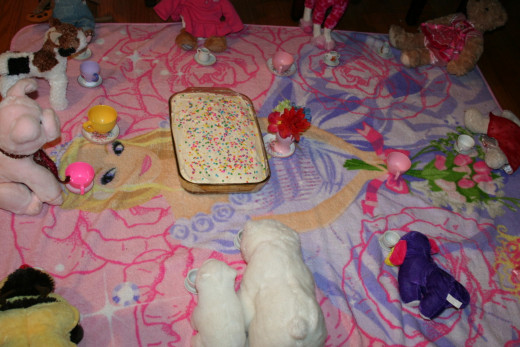
What the experts say!
According to the National Research Center on the Gifted and Talented, The University of Connecticut, The University of Georgia, The University of Virginia, and Yale University, in a 1993 study:
Early literacy development embraces the concept of learning about the nature of the stories, the function of printed words, and sound patterns of oral language.
While it's true that some children progress much faster than others, research suggests that the same kinds of development take place in all children.
Children are intelligent human beings. They know what they want to read at very early ages and often ask for the same book to be repeatedly read to them. Parents and caregivers should honor these requests. With each reading, children learn something new every time and their attention shifts per various aspects of the story.
Also, repetition provides opportunity for various kinds of learning. While it's appropriate for adults to choose books to read to their children to expand the child's possibilities, parents should keep in mind that forcing a child to read books that they do not like is ultimately not providing the kind of experience that will foster life-long readers!
Researchers have discovered that skills that might seem more like play than real reading are important signs of progress in the child's gradual mastery of early reading.
Children imitate adults.
Remember, all children are different. Important points to consider:
- Many children benefit from advanced reading instruction. On the other hand, young children who are gifted in the area of verbal knowledge and reasoning skills will not necessarily have advanced reading skills.
- Children with high verbal intelligence occasionally experience great difficulty in learning to read.
- Some children may not be equally advanced in writing.
- Individuals vary considerably in the relative strengths and weaknesses of their component reading skills.
Children are more likely to enjoy and focus on stories if the activities in them are geared to their current level of understanding and gives them a chance to participate!
One idea that comes to mind is puppet play during story time.
Adults can teach children voice reaction to stories by dramatizing words in a story with different characters.
If ever visiting Connecticut, Stay and Play offers a safe indoor playground for young children.
Conclusion.
Infants and toddlers have a whole world ahead of them in which to explore and learn.
Creating a positive and effective learning environment can greatly guide your child's learning progress.

